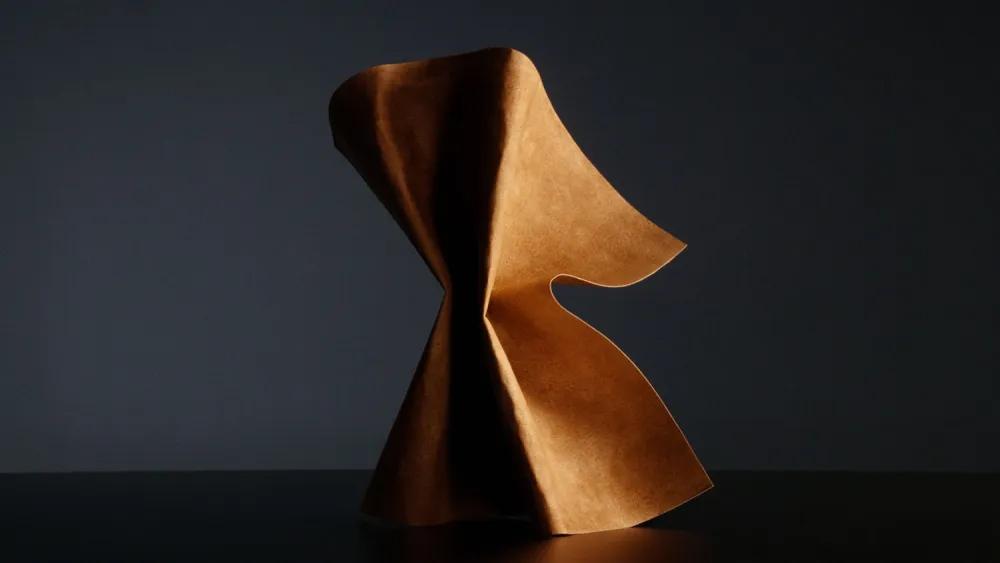MycoWorks: Reishi™ Committed for Commercial-Scale Production
July 20, biomaterials technology company MycoWorks announced three Reishi™ products and is unveiling performance breakthroughs in this revolutionary material made from Fine Mycelium™.
Founded in 2013, MycoWorks is marking its tenth anniversary this year with the launches of Reishi Doux, Reishi Natural, and Reishi Pebble. Each exceeds performance levels required by the luxury industry and behave similarly to that of some animal leathers. These will soon be produced at the world’s first commercial-scale Fine Mycelium factory in Union, South Carolina.
Unparalleled Quality
“This is a breakthrough for the luxury industry,” said Thibault Schockert, CEO of luxury leather goods factory Cuir du Vaudreuil. “This improvement gives us the opportunity to introduce an entirely new category to our business,” referring to the latest Reishi™ material produced by MycoWorks that incorporates new breakthroughs in both Fine Mycelium fermentation and in mycelium tanning.
These milestones are the culmination of three decades of pioneering mycelium materials, beginning in the 1990s with the world’s first demonstrations of mycelium’s structural capabilities by MycoWorks co-founder Phil Ross. Prototypes of MycoWorks’ Fine Mycelium™ leather-like material were first unveiled in 2016, featuring both durability and softness but relatively low tensile strength. After achieving luxury-level performance over years of improvements, recent breakthroughs bring Reishi™ to yet another level of sensual and technical performance. Data on Reishi™ including softness, durability, flexibility, finish adhesion, tear strength, abrasion resistance, homogeneity and more are shown below, with additional data available upon request.
“Heritage-level quality can only be achieved with long-term dedication to discovery, paired with a commitment to craft and the transmission of deep expertise,” observed MycoWorks board member and former CEO of Hermès, Patrick Thomas. “MycoWorks’ Fine Mycelium™ platform is built on these principles, bringing together artisanal mastery with a rigorous approach to material innovation in a scalable way.”
Fine Mycelium™ as a biomaterial, not merely an ingredient
“The strength of our unique Fine Mycelium™ platform is evidenced by the new levels of performance we have achieved in the first half of this year in partnership with our European tannery partners,” said Bill Morris, MycoWorks VP of Product Management, “and our current product has surprised and delighted our brand partners, who have witnessed its evolution. Our latest material not only has Fine Mycelium™’s signature natural feel, but adds to it new levels of technical performance.”
MycoWorks’ brand partners include Hermès, General Motors, Ligne Roset, Heron Preston, Nick Fouquet, and others yet to be announced.
With these new Reishi™ articles, MycoWorks and its brand partners are excited to enter commercialization cycles—with some, such as Nick Fouquet and others, new styles and products Made With Reishi™.
MycoWorks’ Fine Mycelium™ platform is powerful in its tunability, and as a true, grown biomaterial sheet—rather than an added mycelium ingredient as found in other “mushroom leather”. MycoWorks’ process is unique in its ability to endlessly enable improvement. The recent quality advances were achieved by utilizing a combination of enhanced growth conditions plus a fundamentally new, patent-pending tanning approach that MycoWorks developed in-house. Because of the uniqueness of the Fine Mycelium process, every advance marks a differentiator between MycoWorks’ technology platform and that of other biomaterial companies.
“While most plant- or mycelium-based alternative materials use plastic to meet baseline performance standards, MycoWorks has spent ten years taking no shortcuts, in order to achieve the biotech innovations behind our proprietary process,” says Matt Scullin, MycoWorks CEO. “Operating vertically—owning our entire technology stack, rather than licensing and outsourcing—has given us the depth of expertise required to bring a new material to market.”
Meeting luxury’s standards for material performance without the use of plastics means Fine Mycelium™ stands out in a field of alternatives that depend on polyurethane (PU) or polyvinyl chloride (PVC) films, fillers, or backings to provide strength and durability.
MycoWorks




